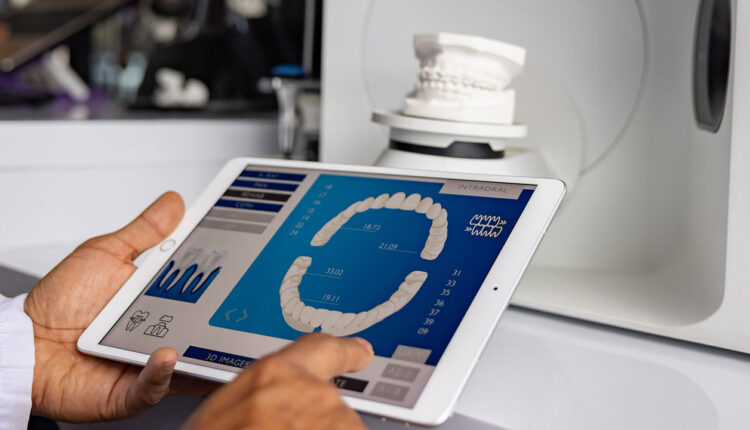
Long-Term Success of Full-Arch Implants Hinges on Maintenance
Full-arch implant prostheses deliver survival rates above 90% over 10 to 15 years, but biological and technical complications increase with time. Regular maintenance visits are essential to manage risks, ensure prosthetic function, and sustain patient satisfaction.
Full-arch implant prostheses demonstrate impressive long-term survival rates ranging from 90% to 98% over 10 to 15 years, though complications increase over time.1-5 Biological complications include peri-implant mucositis (occurring in 30% to 50% of cases), peri-implantitis (10% to 20% of cases at 10 years), and marginal bone loss.6,7 Risk factors for these complications include poor oral hygiene, periodontal disease history, smoking, and diabetes.8
Prosthetic success varies, with most failures stemming from technical complications like screw loosening or fractures rather than implant failure.9-12 Patient satisfaction typically exceeds 90% due to improved function, esthetics, and phonetics, though common complaints include prosthesis bulkiness, food impaction, and speech difficulties, especially during the transition from natural dentition.13-15
Routine maintenance visits with a dentist becomes crucial in long-term maintenance of these protheses. Although the frequency of maintenance visits and follow-ups may depend on each clinician, it is recommended to have patients come for maintenance visits at a minimum of every 6 months to evaluate hygiene, occlusion, and any problems the patient may be experiencing.16 Removal of prostheses may be required if there is inability to clean or prosthetic complications emerge. Replacement of prosthetic screws may be necessary if wear of the screw is noted at maintenance visits. My maintenance protocol for full-arch prostheses is to have the patients return every 3 to 4 months for the first year and then re-evaluate the patient’s hygiene performance and health of the implants and prostheses. From there, it may warrant the patient to remain on the frequent maintenance protocol, or they may be placed on a biannual interval.
References
- Pjetursson BE, Thoma D, Jung R, Zwahlen M, Zembic A. A systematic review of the survival and complication rates of implant-supported fixed dental prostheses (FDPs) after a mean observation period of at least 5 years. Clin Oral Implants Res. 2012;23(Suppl 6):22-38.
- Gallucci GO, Benic GI, Eckert SE, et al. Consensus statements and clinical recommendations for implant loading protocols. Int J Oral Maxillofac Implants. 2014;29 Suppl:287-290.
- Malo P, de Araújo Nobre M, Lopes A, Moss SM, Molina GJ. A longitudinal study of the survival of All-on-4 implants in the mandible with up to 10 years of follow-up. J Am Dent Assoc. 2011;142:310-320.
- Maló P, de Araújo Nobre M, Lopes A, Ferro A, Botto J. The All-on-4 treatment concept for the rehabilitation of the completely edentulous mandible: A longitudinal study with 10 to 18 years of follow-up. Clin Implant Dent Relat Res. 2019;21:565-577.
- La Monaca G, Pranno N, Annibali S, Di Carlo S, Pompa G, Cristalli MP. Immediate flapless full-arch rehabilitation of edentulous jaws on 4 or 6 implants according to the prosthetic-driven planning and guided implant surgery: A retrospective study on clinical and radiographic outcomes up to 10 years of follow-up. Clin Implant Dent Relat Res. 2022;2):831-844.
- Atieh MA, Alsabeeha NH, Faggion CM, Jr., Duncan WJ. The frequency of peri-implant diseases: a systematic review and meta-analysis. J Periodontol. 2013;84:1586-1598.
- Derks J, Schaller D, Håkansson J, Wennström JL, Tomasi C, Berglundh T. Peri-implantitis – onset and pattern of progression. J Clin Periodontol. 2016;43:383-388.
- Renvert S, Polyzois I. Risk indicators for peri-implant mucositis: a systematic literature review. J Clin Periodontol. 2015;42 Suppl 16:S172-186.
- Gonzalez-Gonzalez I, deLlanos-Lanchares H, Brizuela-Velasco A, et al. Complications of fixed full-arch implant-supported metal-ceramic prostheses. Int J Environ Res Public Health. 2020;17:4250.
- Altarawneh S, Limmer B, Reside GJ, Cooper L. Dual jaw treatment of edentulism using implant-supported monolithic zirconia fixed prostheses. J Esthet Restor Dent. 2015;27:63-70.
- Papaspyridakos P, Chen CJ, Chuang SK, Weber HP, Gallucci GO. A systematic review of biologic and technical complications with fixed implant rehabilitations for edentulous patients. Int J Oral Maxillofac Implants. 2012;27:102-110.
- Papaspyridakos P, Bordin TB, Kim YJ, et al. Technical complications and prosthesis survival rates with implant-supported fixed complete dental prostheses: a retrospective study with 1- to 12-year follow-up. J Prosthodont. 2020;29:3-11.
- Gonçalves GSY, de Magalhães KMF, Rocha EP, Dos Santos PH, Assunção WG. Oral health-related quality of life and satisfaction in edentulous patients rehabilitated with implant-supported full dentures all-on-four concept: a systematic review. Clin Oral Investig. 2022;26:83-94.
- Oh SH, Kim Y, Park JY, Jung YJ, Kim SK, Park SY. Comparison of fixed implant-supported prostheses, removable implant-supported prostheses, and complete dentures: patient satisfaction and oral health-related quality of life. Clin Oral Implants Res. 2016;27:e31-7.
- MA EL, Elgamal M, Mohammed Askar O, Youssef Al-Tonbary G. Patient satisfaction and oral health-related quality of life (OHRQoL) of conventional denture, fixed prosthesis and milled bar overdenture for All-on-4 implant rehabilitation. A crossover study. Clin Oral Implants Res. 2019;30:1107-1117.
- Lanzetti J, Crupi A, Gibello U, et al. How often should implant-supported full-arch dental prostheses be removed for supportive peri-implant care to maintain peri-implant health? A systematic review. Int J Oral Implantol. 2024;17:45-57.
This originally appeared in Chang B. The evolution of full-arch implant rehabilitation. Decisions in Dentistry. 2025;11(3):10-15.

